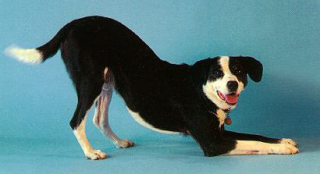Good Behavior

Taking the good for granted and moaning and groaning about the bad is without a doubt, our biggest human foible. Rather than relishing all wonderful things about life, we tend to focus on problems. This tendency is extreme when people interact with their family, friends, colleagues, dogs and horses, and especially when people evaluate their own lives.
For years and years, dog training was almost entirely problem-based. People would offer limited supervision and instruction to their dogs and them punish them whenever they broke rules that they didn’t even know existed. Yet, if we objectively time-sample behavior, we find that even very badly behaved (uneducated) dogs (and people) are actually good most of the time. For example, observe your dog for half an hour and every two minutes or so ask the simple question, “Is he being good or bad?” You will find that he is being good well over 90% of the time. But in the normal course of the day, most of a dog’s good behaviors are ignored. Instead owners are more likely to pay attention to the dog when he barks, or when he steals, chews or runs away with inappropriate articles. So much so in fact, that many dogs quickly learn that misbehaving is the very best way to get their owners attention. Indeed, many dogs will bark, steal, chew and run away with inappropriate articles simply to get their owners to respond or at least acknowledge their existence.
Dogs are social animals and absolutely thrive on social interaction, communication and feedback regarding the appropriateness of their behaviors. Dogs need oodles and oodles of attention (and affection), so lets give it to them when they are good.
One of the most magically powerful training techniques is to ignore all unwanted and inappropriate behavior and instead, to pay attention to and reinforce good behaviors.
Observe your dog and whenever he does something you like, simply say, “Good dog” and give him a piece of kibble. For example, reward your dog whenever he sits, lies down, stops whining/barking/howling/growling (shushes), stops jumping (four on the floor), looks at you, or looks cute.
Unwanted behavior offers a wonderful dog training opportunity because now owners may reward their dog for ceasing undesirable behavior. Reinforcing the cessation of misbehavior is the training technique of choice when trying to eliminate whining, growling and running away, because punishment would only exacerbate the problem, making the dog more likely to whine, growl and run away.
Similarly, rewarding a dog for the absence of misbehavior is an extremely effective training technique. Sometimes the dog may look like he isn’t doing much. But that’s precisely the point! The dog may just stand there wagging his tail, but just think of all the annoying and worrying things he could have been doing. He could have been barking, snarling, snapping, or biting! So, let’s reward dogs for not acting fearfully or antisocially.
Or, you might decide to actively reward your dog for any sociable, friendly or appeasing behavior, such as when he approaches, wags his tail, wags his butt, sticks out his tongue, raises a paw, play bows, or rhythmically shifts his weight back and forth from front paw to front paw.
Obviously, simply ignoring unwanted behavior will not cause it to be eliminated entirely, but you will see a speedy and dramatic reduction in the frequency of undesirable behavior because the dog now allocates most of his time for good behaviors, which are successful in soliciting the owner’s attention and affection, and so there is simply no time for bad behavior. After just a couple of dozen rewards, you will find that your dog is sitting and looking up at you — a perfect sit-stay and perfect unwavering attention. And you didn’t ask for a thing. All you said was, “Thank you!”
In this section, I have sometimes used the words “good” and “bad” to describe behavior. However, it is unlikely that dogs have a solid cognitive grasp on ethics and morality, or even about the concepts of good and bad. Dogs behave (chew, bark, growl, pull on leash, run away etc.) the way they do simply because that’s the way dogs behave and that’s the way owners have trained or allowed the dogs to behave. By “good” behavior, I mean behavior that owners consider to be desirable, appropriate or acceptable and by “bad” behavior, I mean behavior that owners consider to be undesirable, inappropriate or unacceptable